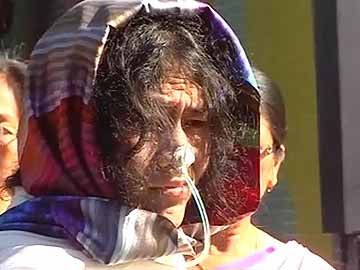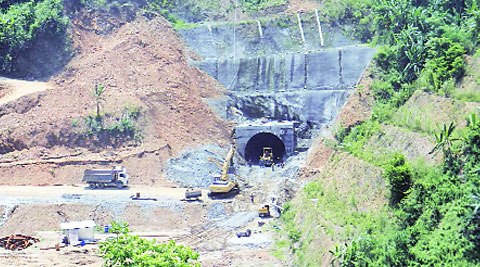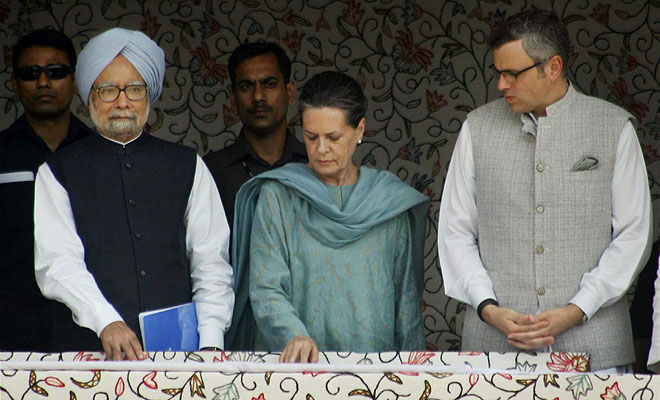By Sudeep Chakravarti
With weapons and narcotics all across—it’s easy to be spoilt in Moreh
Strips of pseudoephedrine dumped in a graveyard in Moreh. Photo: Sudeep
Chakravarti/Mint
It’s easy to be spoilt in Moreh.
“Beretta? Glock? Llama? Smith and Wesson?” offers one arms procurer. He
leans back on a worn sofa in his modest house jammed in a typically
crowded ward of this border town in Manipur.
Moreh is marked as India’s key transit point to Myanmar on the ribbon of
a planned Asian Highway route—Route 1—linking Southeast Asia with West
Asia through India. A Land Customs Station is in the process of being
upgraded; it is to be integrated with immigration facilities. A truck
park is planned. Perhaps a “mineral park” for Myanmar limestone, copper
ore and such.
A regular bus service is to link Manipur’s capital Imphal
to fabled Mandalay via Moreh. Products and people from both countries
and points beyond will move seamlessly, officially.
That’s the hazy future. For now, the underbelly is the belly. Weapons
that come in to India. Narcotics of various shades and grades that
travel both ways. Imported timber. Red sandalwood from Karnataka priced
at Rs.2,500-3,000 a kilo, prized in Myanmar, Thailand, even China.
There are more innocent products: Indian-made pharmaceuticals, fabric
for the ubiquitous Myanmarese longyi, juice, chocolate, infant food,
tyres for Bajaj autorickshaws—one takes me on a 15-minute ride to Tamu,
the nearest town in Myanmar that falls within the radius that Indians
are permitted to travel without a visa, from morning till 5pm. In
reverse flow arrive LED lamps, blankets, toys, consumer goods, Godzilla
brand mosquito repellant, even yongchak beans practically worshipped in
Manipur.
Official trade data for Moreh with the ministry of development of north
eastern region places two-way trade at a little over Rs.4 crore for
2010-11.
Mostly betel nut was imported, cumin seed exported. Mostly
agricultural products and medicine are permitted to be traded without
application of duty.
Unofficial trade figures? Officially incalculable. The duty paid is to
government officials, security overseers, and rebel groups.
To weapons. The handguns carried by my arms procurer host fire 9mm
shells. Llama and Smith and Wesson retail at his arms deli for Rs.1.5
lakh and Rs.1.8 lakh apiece, Beretta and Glock at Rs.2 lakh per piece.
Cash only. (Rupees work across the border in northwestern Myanmar.)
The man is one of several weapons procurers in town who feed some Kuki
rebels groups, occasionally Naga rebel factions, and an assortment of
other Northeastern rebels. (Some rebel groups bypass those like him to
directly deal with the source.)
He lets me record our conversation and take notes, but requests
anonymity. In a place with a population of about 40,000 and tight
communities of Kuki tribals, the non-tribal Meitei, the Islamic Meitei
Pangal, and Tamil, Sikh and Nepali folk displaced by Myanmar’s
decades-old ethnic cleansing, the smallest clue can be a giveaway.
The man claims he would then be open to harassment by—read: additional
payoffs to—Manipur’s police, central paramilitaries, and various
factions of rebels in Manipur who are at once purchaser and protector.
Worse, he might end up dead.
I ask him: what about assault rifles? He offers several Kalashnikov
copies and variants. AK 47s brought in courtesy of Thai suppliers and
from Myanmar’s autonomous Shan state; AK 56 and Type 81s “from China”.
There are ageing American M-15s and M-16s sourced from Thailand. Weapons
come used or in “packing”—a term for brand new weapons. Accessories are
naturally available: ammunition, sniper scopes, laser guidance,
silencers. What else? “Landmines, grenades, RPGs (rocket-propelled
grenade launchers)…”
Earlier, I visited a nearby village to see dumps containing
thousands—even tens of thousands—of emptied pseudoephedrine strips. The
medicine is extracted and then transported to Myanmar for use in
manufacturing methamphetamines: “speed”.
Then I visited a woman who sells a grade of heroin called No. 4. A
“shot” costs Rs.100. Among an estimated 150 such sellers in Moreh, she
claims to sell 15 grams of heroin in a couple of days to residents and
visitors. Her sponsor pockets Rs.18,000 a day. She profits by Rs.2,000
daily. But like her sponsor, she also needs to pay the local police,
bureaucracy and rebels. As I talked to her, in an adjacent room, users
injected heroin.
It is now evening. Locals promise smoked fish, Myanmar brand beer or the
smoother Dali from China—available openly in Moreh, part of a state
where prohibition is law. There’s even Blenders Pride whisky the vendor
says is sourced from the “army”, to pass on at Rs.750 a bottle.
Free trade? You bet.
Sudeep Chakravarti’s forthcoming book is Clear-Hold-Build: Hard Lessons
of Business and Human Rights in India. His previous books include Red
Sun: Travels in Naxalite Country and Highway 39: Journeys through a
Fractured Land.



















 Hunting of frogs is a serious threat to the ecosystem. Feeding on pests, frogs are natural pest controller.
Hunting of frogs is a serious threat to the ecosystem. Feeding on pests, frogs are natural pest controller. 






